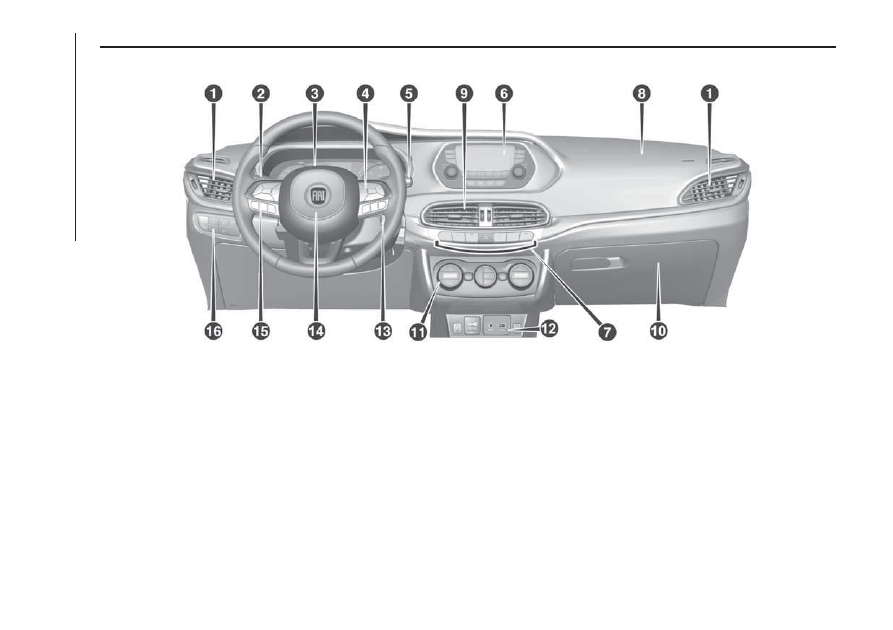Fiat Tipo 4Door (2018 year). Instruction - part 1

INSTRUMENT PANEL
1. Adjustable side air diffusers 2. Left stalk: direction indicators, main beam headlights, flashings 3. Instrument
panel 4. Steering wheel controls 5. Right stalk: windscreen wiper / windscreen washer, setting of the rain sensor sensitivity
level 6. Uconnect™ 7. Control buttons 8. Passenger front airbag (where provided) 9. Adjustable central air
diffusers 10. Glove compartment 11. Climate controls 12. Buttons on the central console: seat heating, USB port + AUX
port (where provided) panel, socket/cigarette lighter 13. Ignition switch 14. Driver front airbag 15. Steering wheel
controls 16. Control panel: front fog lights (where present), rear fog lights, headlight alignment adjustment, iTPMS reset, ESC
OFF (where present).
1
P03036J005
8
KNOWING
YOUR
CAR